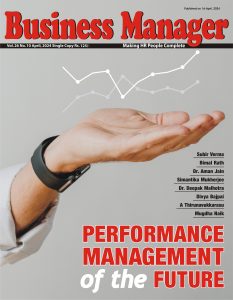New Delhi Niti Aayog has made some observations on labour force participation and made recommendations to the platform-based companies in its latest “India’s booming Platform and Gig economy”.
According to report. It is estimated that workers engaged in the gig economy will grow from 77 lakhs in 2020-21 to 2.35 crore in 2029-30. Further observations show that about 47% of the gig work is in medium-skilled jobs, 22% in high-skilled jobs, and 31% in low-skilled jobs.
Considering these estimates, Niti Aayog has recommended some measures for platform-based companies. It has proposed fiscal incentives, like tax breaks or startup grants, for companies with about one-third of their workforce as women and people with disabilities. This is in an attempt to increase the participation of women in the gig economy.
Also read: Tier 2 & 3 cities become employment hubs – Arjun Jolly
Niti Aayog has also recommended extending social security measures such as paid sick leaves, health access and insurance, occupational disease and work accident insurance, retirement/pension plans and other contingency benefits. It has also suggested that platform-based companies support workers when work is irregular.
The report comes on the heels of the Draft Code on Social Security, 2020 – a proposed amendment to the country’s existing labour laws to extend statutory benefits such as healthcare, maternity leave and income security to all workers, including those employed in informal gigs and platform-mediated work. To this end, the report is alive to the concerns of gig workers and recognises the need for overarching frameworks for social protection that is necessary to protect their interests.Remedying these exploitative characteristics of the platform gig economy is the first step towards improving the working conditions of persons employed in the sector, with multi-stakeholder, participatory, self-governing institutions furnishing a possible mechanism for governance of platform work.
Highlights:
- The report offers a comprehensive methodical approach to calculating the sector’s current size and potential for employment creation.
- It examines the benefits and drawbacks of this developing industry, shows international best practices for social security programmes, and outlines plans for skill development and job creation for various worker categories in the industry.
- According to the research, the gig economy employed 77 lakh (7.7 million) employees in 2020–21.
- They made up 1.5 percent of India’s total labour force or 2.6 percent of the non-agricultural workforce.
- By 2029–2030, there will be 2.35 crore (23.5 million) workers in the gig economy. By 2029–2030, it is anticipated that gig workers will account for 6.7 percent of India’s non-agricultural workforce and 4.1 percent of all income.
- Currently, medium-skilled occupations make up approximately 47% of gig labour, high skilled jobs make up about 22%, and low-skilled jobs make up about 31%.
- The trend indicates that the concentration of workers with medium skills is gradually decreasing while it is rising for those with low and high skills.
- The report suggests connecting self-employed people in the business of selling regional and rural cuisine, street food, etc., with platforms in order to enable them to sell their products to larger markets in towns and cities to accelerate access to finance through products specifically designed for platform workers.
- The report recommends platform-led transformational and outcome-based skilling, improving social inclusion through programmes that educate workers and their families about gender issues and accessibility, and extending social security measures in partnership as envisioned by the Code on Social Security 2020.




































Add comment